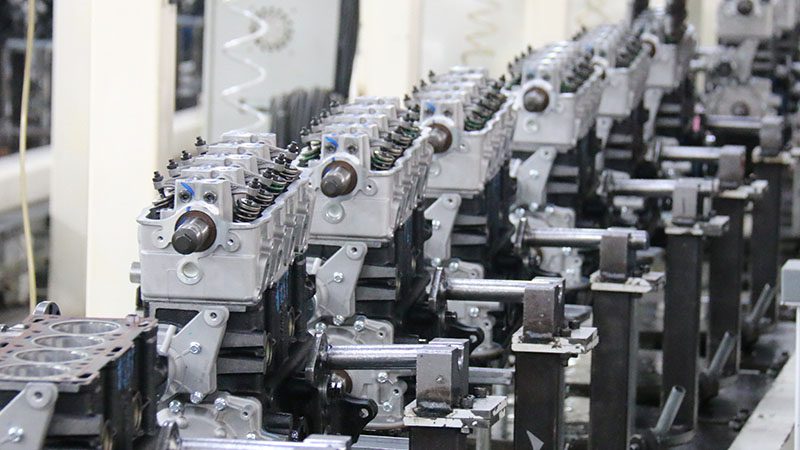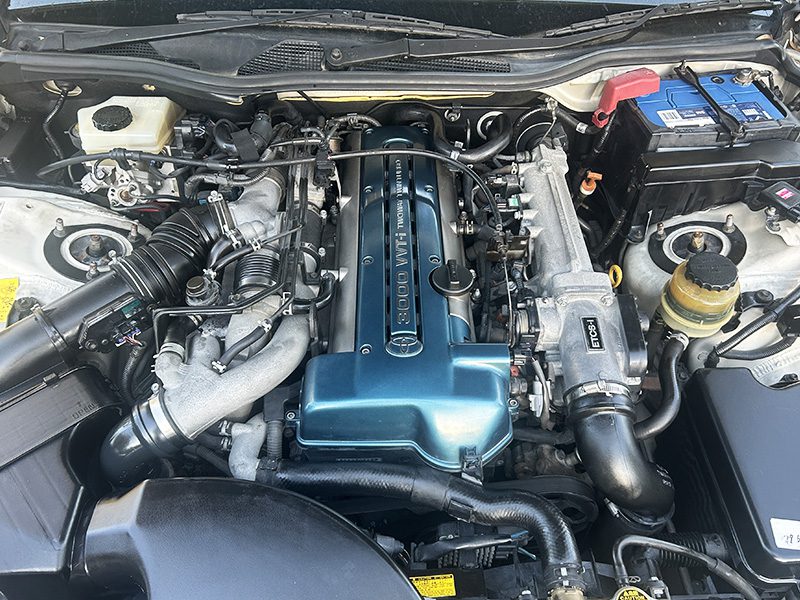The Toyota 2JZ engine isn’t just another inline-six — it’s a legend. Whether you’re a JDM fan, a tuner, or just someone who’s browsed a few drag racing videos on YouTube, chances are you’ve heard whispers (or roars) about this iconic powerplant. Known for its insane durability and tuning potential, the 2JZ is one of the few engines that’s earned a cult following far beyond Toyota circles.
In this guide, we’ll cover everything you need to know — from its specs and variants to why it’s so sought after today.

What Is the Toyota 2JZ Engine?
The 2JZ is part of Toyota’s JZ engine family, which includes the 1JZ and 2JZ series. Introduced in the early 1990s, the 2JZ is a 3.0L inline-six engine that comes in both naturally aspirated and turbocharged versions.
Toyota built the 2JZ with a focus on strength, refinement, and performance — and they nailed it. The engine gained mainstream fame when it powered the MK4 Toyota Supra (A80), a car that’s now legendary in its own right thanks to movies like Fast & Furious and its monstrous tuning capabilities.
2JZ Engine Variants Explained
There are two main factory variants of the 2JZ engine:
2JZ-GE: The Naturally Aspirated Version
The 2JZ-GE is the “base” version of the engine — but don’t underestimate it.
- Configuration: DOHC, 24-valve inline-six
- Fuel System: Sequential multi-port fuel injection
- Applications: Lexus GS300, Toyota Aristo, Toyota Crown, Lexus IS300
- Output: Around 215–230 hp and ~220 lb-ft of torque
It doesn’t have the twin turbos of the GTE, but it still has a strong iron block and a reputation for running forever — making it a great swap candidate or NA tuning platform.
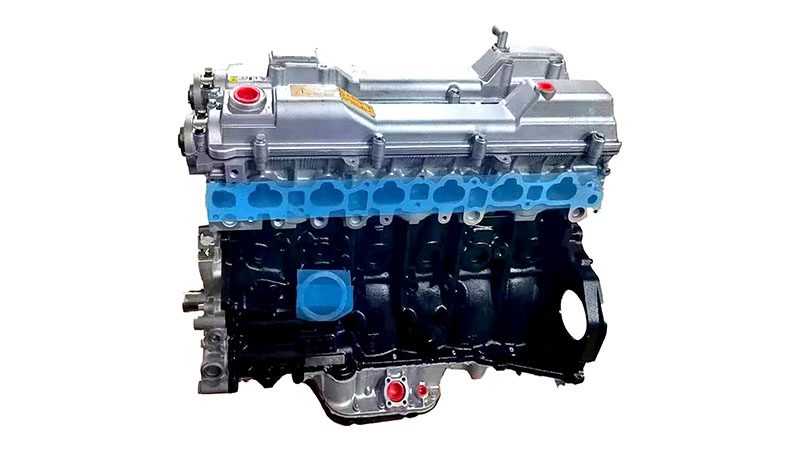
2JZ-GTE: The Turbocharged Monster
Now we’re talking. The 2JZ-GTE is what truly put this engine on the map.
- Configuration: DOHC, 24-valve inline-six with twin turbochargers
- Boost: Stock twins (CT20A in JDM; CT12B in USDM)
- Intercooler: Front-mount, air-to-air
- Applications: Toyota Supra MK4, Toyota Aristo (Japan)
- Output:
- 276 hp (JDM, underrated)
- 320 hp (USDM)
- 333–800+ hp with mods
- 276 hp (JDM, underrated)
It features forged internals, oil squirters, and a beefy bottom end — all from the factory.
Toyota 2JZ Engine Specs (Quick Comparison)
| Specification | 2JZ-GE | 2JZ-GTE |
|---|---|---|
| Displacement | 2997 cc (3.0L) | 2997 cc (3.0L) |
| Block Material | Cast iron | Cast iron |
| Head Material | Aluminum | Aluminum |
| Compression Ratio | 10.0:1 | 8.5:1 (JDM) / 9.0:1 (USDM) |
| Forced Induction | No | Twin-turbocharged |
| Stock Horsepower | ~225 hp | 276–320+ hp |
| Redline | ~6,800 rpm | ~7,000 rpm |
What Makes the 2JZ So Special?
Here’s the magic sauce behind the 2JZ:
- Iron block: Built like a tank. It handles boost like a champ.
- Closed deck design: Offers better structural integrity for high-power builds.
- Forged crankshaft and rods (in GTE): These components are stout enough for 600+ hp even without upgrades.
- Aftermarket support: Endless. From bolt-ons to full billet builds.
- Tuning potential: Tuners have pushed this engine to over 1,000 hp with reliability — something few stock blocks can claim.
Simply put, the 2JZ is overbuilt by modern standards. And that’s why enthusiasts love it.
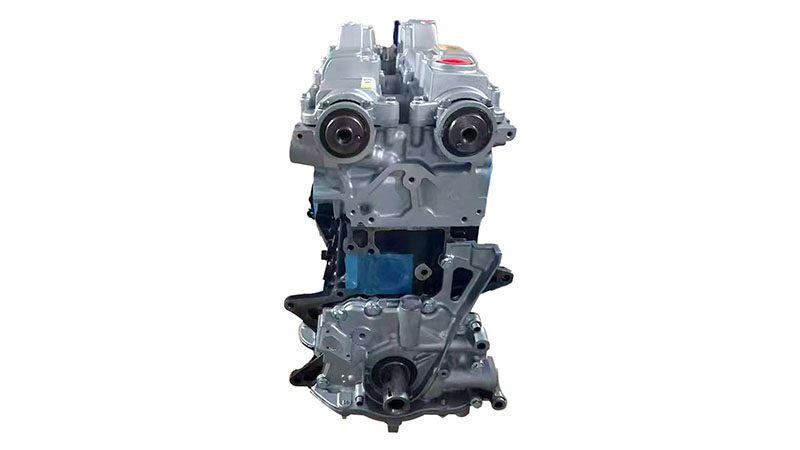
Is the 2JZ Engine Reliable?
Absolutely — and not just “Toyota reliable,” but in a league of its own. Built with over-engineered internals and a cast-iron block, the 2JZ is known as one of the most durable performance engines ever made.
Longevity
With proper maintenance, many 2JZs easily surpass 300,000 miles, with some reaching 500,000+. Even at 100,000 miles, they’re often just getting started.
Maintenance-Friendly
The 2JZ uses a timing belt, not a chain — simpler to service, and the overall layout is straightforward. Toyota designed it for longevity and ease of repair, making it a favorite among both DIYers and professional techs.
Common Issues
Like any engine, it’s not flawless. Expect occasional:
- Valve cover gasket leaks
- Coil pack failures (on early GE models)
- Turbo seal wear (on older GTEs)
These are minor, affordable fixes — and far from deal-breakers.
Verdict
No major design flaws, no hidden weak points. With good oil, cooling, and parts, the 2JZ can outlast the car it’s in — and keep running strong in the next one.

2JZ Engine Swap Guide
Thinking of swapping a 2JZ into another car? You’re not alone. Thanks to its proven reliability and power potential, the 2JZ is a favorite swap choice for tuners around the world.
Popular Swap Platforms
- Nissan 240SX (S13/S14): A go-to for drifters — lightweight and rear-wheel drive.
- Mazda RX-7 (FD3S): A controversial but powerful alternative to the rotary.
- BMW E30/E36/E46: Great balance of handling and space; popular with Euro-JDM fans.
- Lexus IS300 / GS300: Already equipped with a 2JZ-GE, making turbo upgrades easy.
- Toyota GT86 / Subaru BRZ: A modern chassis that benefits hugely from the extra torque.
Swap Considerations
- Mounting Kits: Custom or pre-made kits are needed for most platforms.
- Transmission & Driveshaft: R154, V160, CD009, or T56 are common options; custom driveshaft may be required.
- Wiring & ECU: Standalone ECUs like Haltech or AEM offer better tuning control.
- Cooling & Fueling: Upgraded radiator, fans, and fuel system are essential.
- Emissions Compliance: U.S. regulations vary by state — check local laws.
While not plug-and-play, 2JZ swaps are well-documented, with strong community and aftermarket support. With the right planning, it’s a rewarding upgrade that brings legendary performance to nearly any RWD platform.
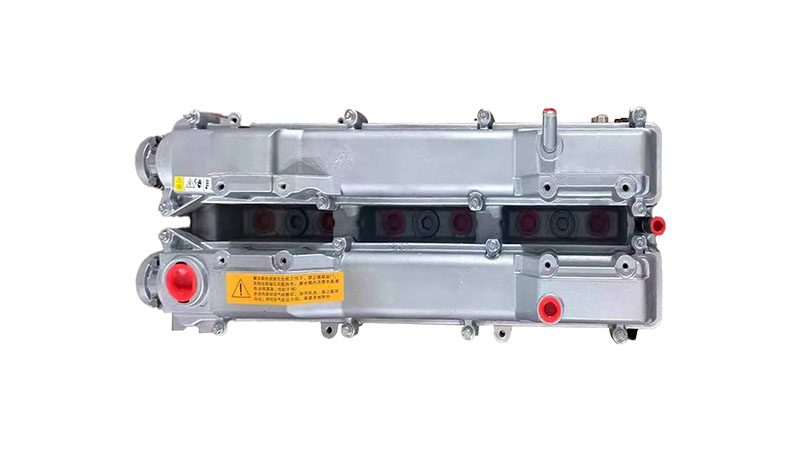
How Much Power Can a 2JZ Handle?
That’s the million-dollar question — and part of what makes the 2JZ so legendary.
Stock Internals
The factory 2JZ-GTE bottom end is incredibly strong. With upgraded fueling, a standalone ECU, and a proper tune, many tuners safely push 600–700 horsepower on stock pistons and rods. Some even go higher, though reliability starts to taper off beyond that range.
Forged Builds
For those aiming to break the four-digit mark, forged internals are the key. A fully built 2JZ with forged pistons, H-beam rods, and ARP head studs can handle 1,000+ horsepower reliably — and some drag setups have gone well beyond that. Add a billet main cap girdle and you’re into serious race engine territory.
Turbo Upgrades
The sky’s the limit when it comes to turbos. Popular setups range from Precision 6266, BorgWarner S366, to full-frame Garrett GTX and G42 turbos. Whether you’re going for responsive spool or top-end power, there’s a proven turbo match for every build level.
Real-World Results
Want proof? Just search “2JZ dyno” on YouTube and you’ll find endless examples of Supras making 800+ hp on pump gas, and well over 1,000 hp on E85 or race fuel. The 2JZ has been proven time and time again — from street builds to 6-second drag cars.
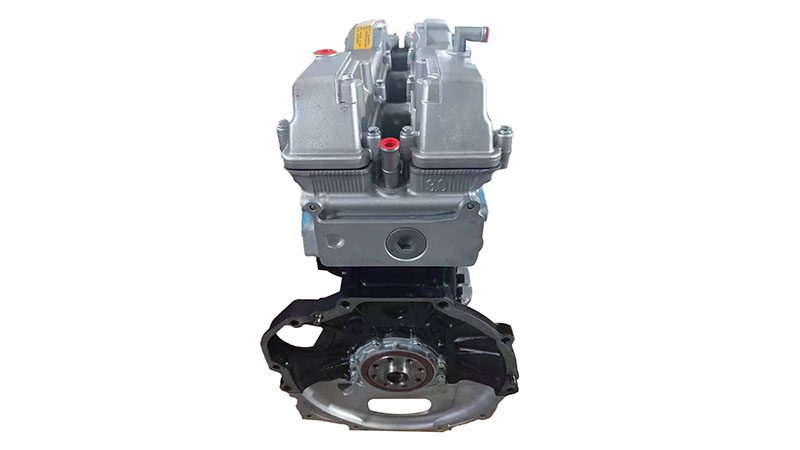
Where to Buy a 2JZ Engine
If you’re looking to source a 2JZ engine, there are several routes to consider depending on your budget, project goals, and preferred condition:
- Used Engines – Commonly available through JDM importers, salvage yards, and online dealers. These are often cost-effective, but quality can vary — so it’s important to verify mileage and compression.
- Remanufactured Engines – Ideal for those seeking a refreshed engine with upgraded components and greater reliability. A smart option for performance builds, customer installations, or daily-driven projects.
- New (Crate-Style) – Rare but occasionally available through specialty tuners or Toyota Racing Development (TRD), typically reserved for high-end applications.
Many engine builders, performance shops, and distributors turn to trusted aftermarket suppliers for complete 2JZ engine packages and compatible components. Companies like Nanjing Woda Auto Technology Co., Ltd. offer consistent supply, technical support, and flexible options to help businesses deliver reliable 2JZ solutions to their customers.
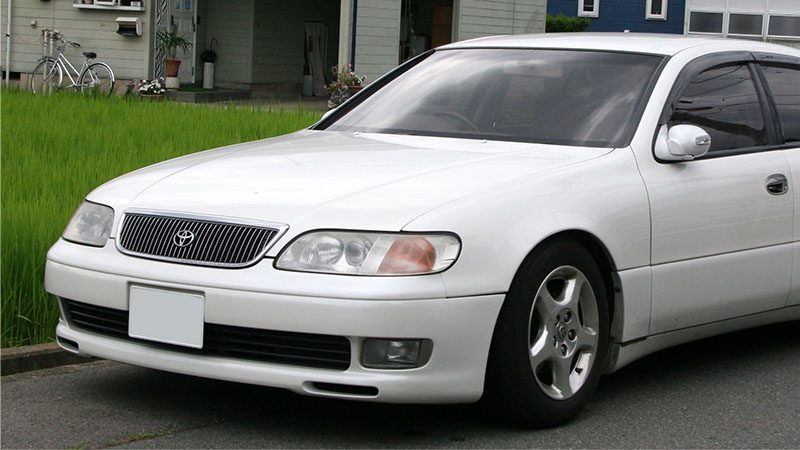
FAQs
What makes the 2JZ engine so special?
The 2JZ is known for its bulletproof iron block, forged internals (in the GTE), and massive tuning potential. It’s capable of handling high power reliably, with strong aftermarket support and legendary status in the car community.
How much horsepower can a stock 2JZ handle?
A stock 2JZ-GTE bottom end can handle around 600–700 hp with proper tuning and supporting mods. Built versions regularly exceed 1,000 hp.
What cars came with the 2JZ engine?
The 2JZ was found in several Toyota and Lexus models, including the Supra Mk4, Aristo, GS300, IS300, Crown, and Soarer, depending on the market.
Is the 2JZ engine reliable?
Yes — extremely. With regular maintenance, many 2JZ engines run beyond 300,000 miles. Common issues like coil pack failure or gasket leaks are easy to fix and don’t impact long-term reliability.
What’s the difference between 2JZ-GTE and 2JZ-GE?
The 2JZ-GTE is the turbocharged, high-performance version with stronger internals. The 2JZ-GE is naturally aspirated and designed for smooth, everyday driving, but still shares the same durable block.
Final Thoughts
The Toyota 2JZ isn’t just an engine — it’s a symbol of an era when manufacturers overbuilt motors and left room for enthusiasts to push boundaries. Whether you’re looking to swap it into a drift car, build a 1,000-hp street monster, or just appreciate it from afar, the 2JZ continues to earn its legendary status.
At Nanjing Woda Auto Technology Co., Ltd., we specialize in high-quality engine components and complete solutions for builds like yours. With over 25 years of experience in the automotive industry, we provide remanufactured 2JZ engines, crankshafts, cylinder heads, and performance parts to customers around the world.
👉 Ready to start your own 2JZ project?
Contact us today for engine options, expert advice, and competitive pricing on everything you need to bring your build to life.
